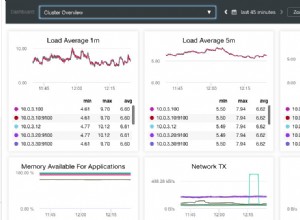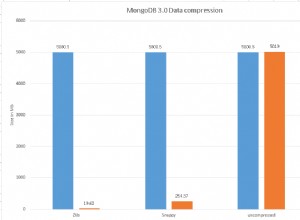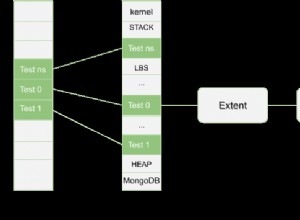Per ottenere il risultato desiderato, inizia scomponendo la query SQL iniziando con la sottoquery:
Select *
from tblData
Where TFN in (Select TFN From @tmpTFNList) and TrendDate between @StartDate AND @EndDate
Segue la query mongo equivalente:
db.getCollection("_core.data").aggregate([
{
"$match": {
"TFN": { "$in": tmpTFNList },
"TrendDate": {
"$gte": startDate,
"$lte": endDate
}
}
}
])
Il $group
equivalente aggregato di
Select TFN, Max(Impressions) MaxImpression
from tblData
Where TFN in (Select TFN From @tmpTFNList) and TrendDate between @StartDate AND @EndDate
Group by TFN
segue
db.getCollection("_core.data").aggregate([
{
"$match": {
"TFN": { "$in": tmpTFNList },
"TrendDate": {
"$gte": startDate,
"$lte": endDate
}
}
},
{
"$group": {
"_id": "$TFN",
"MaxImpression": { "$max": "$Impression" }
}
}
])
Le prime 5 query
Select Top 5 a.TFN, a.MaxImpression as MaxCount from (
Select TFN, Max(Impressions) MaxImpression
from tblData
Where TFN in (Select TFN From @tmpTFNList)
and TrendDate between @StartDate AND @EndDate
Group by TFN
) a
è possibile con $limit
operatore e la selezione dei campi tramite il $project
fase come
db.getCollection("_core.data").aggregate([
{ /* WHERE TFN in list AND TrendDate between DATES */
"$match": {
"TFN": { "$in": tmpTFNList },
"TrendDate": {
"$gte": startDate,
"$lte": endDate
}
}
},
{ /* GROUP BY TFN */
"$group": {
"_id": "$TFN",
"MaxImpression": { "$max": "$Impression" }
}
},
{ "$limit": 5 }, /* TOP 5 */
{ /* SELECT a.MaxImpression as MaxCount */
"$project": {
"TFN": "$_id",
"_id": 0,
"MaxCount": "$MaxImpression"
}
}
])
AGGIORNAMENTO
Per ottenere il risultato desiderato dal campione in questa modifica
, hai bisogno di un extra $sort
pipeline prima del $group
dove ordina i documenti in base a TrendDate e Impression campi, entrambi in ordine decrescente.
Dovrai quindi utilizzare il $first
operatore accumulatore all'interno del $group
fase della pipeline per ottenere la massima impressione poiché avrai un flusso ordinato di documenti nella tua pipeline.
Prendi in considerazione l'esecuzione dell'operazione aggregata rivista come:
db.getCollection('collection').aggregate([
{
"$match": {
"TFN": { "$in": tmpTFNList },
"TrendDate": {
"$gte": startDate,
"$lte": endDate
}
}
},
{ "$sort": { "TrendDate": -1, "Impression": -1 } },
{
"$group": {
"_id": "$TFN",
"MaxImpression": { "$first": "$Impression" }
}
},
{ "$limit": 5 },
{
"$project": {
"TFN": "$_id",
"_id": 0,
"MaxCount": "$MaxImpression"
}
}
])
Risultato campione
/* 1 */
{
"TFN" : 84251456,
"MaxCount" : 22
}
/* 2 */
{
"TFN" : 84251455,
"MaxCount" : 35
}




